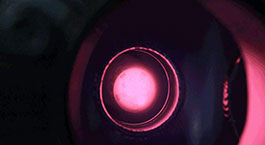 Your current location: Home > Technical Support > Popular Science Column > Fermion's 100 Q...
Your current location: Home > Technical Support > Popular Science Column > Fermion's 100 Q... Copper washers can be divided into standard copper washers and non-knife-edge copper washers.
Standard copper washers are used in the largest amount. In principle, standard copper washers of the same size and material can be mixed. Standard copper washers can be expanded into annealing washers, gold-plated washers, and thickened washers:
Annealed copper washers are softer than standard copper washers and are generally used for installation in windows, electrodes, or feedthroughs. In addition, annealing washers are softer and can have larger deformation, so they can be used in places where angles need to be adjusted.
Gold-plated copper washers are suitable for corrosive occasions, such as near-normal pressure or S, Se growth chambers, etc. Gold-plated washers are recommended. Experience shows that copper washers are easily corroded and contaminated, and gold-plated washers are much better.
Thickened copper washers are mostly used to correct flange angles. In order to have more deformation, they are generally heat treated.
In addition to standard copper washers, the most promising is non-knife-edge copper washers. The main advantage is that they can be reused, but they are slightly more expensive than standard copper washers. They can be used for damaged flanges or special circumstances:
Flanges that need to be disassembled and assembled many times are best used with torque wrenches
Sensitive flange installation, such as windows, feedthroughs, etc. After research and actual testing, it was found that the screw torque required for sealing with non-knife-edge copper washers is 1/3 to 1/2 less than that of ordinary copper washers, and can be used instead of annealed washers.
This type of copper washer is easily stuck on the flange and is suitable for the installation of some difficult and heavy parts.
21.What is the difference between the beveled copper gasket and the ordinary knife-edge copper gasket?
See the figure below for details. Ordinary knife-edge copper gaskets rely on flange knife-edge extrusion for sealing, and there will be indentations after use. The inner diameter of the beveled copper gasket is larger than that of the traditional gasket, which expands the available size of the connection port, and realizes vacuum sealing through the close contact between the inner wall of the gasket and the outer bevel of the flange knife-edge. It does not require the flange knife-edge to cut in, and is suitable for the use of damaged flanges.

▲ Beveled sealing copper gasket (left) and ordinary knife-edge copper gasket (right)
22.If the new bevel seal is used in the future, will the old knife-edge seal be completely eliminated?


